Category: Basic/Manual
-
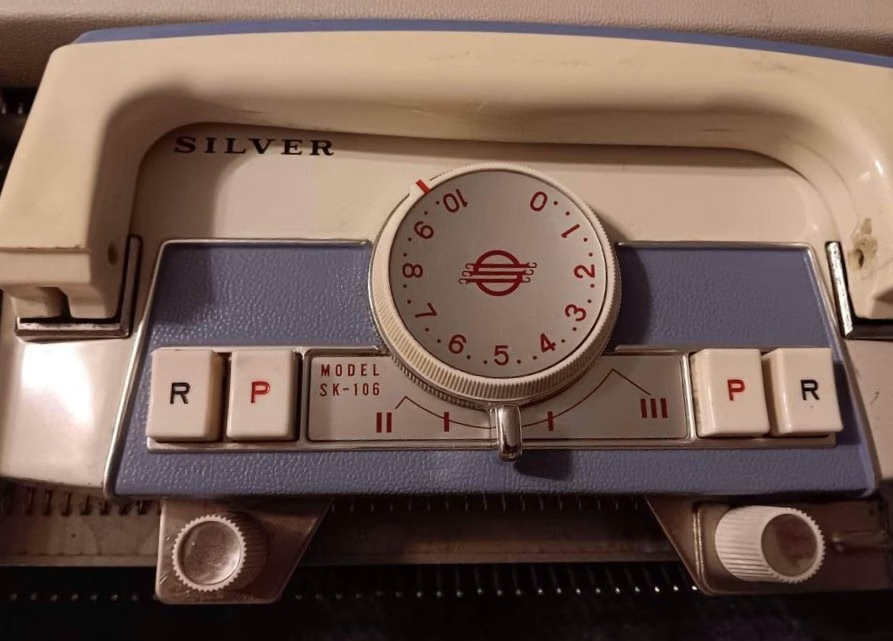
Silver SK-106 knitting machine
Silver SK106 knitting machine was released to the markets in the second half of 1960s. It is a standard-gauge knitting machine, in which all 200 needles are 4.5 mm apart from each other. Silver SK106 is identical to Studio SK106. This machine has only basic patterning capabilities, meaning, all needle selection to make textured/pattern fabric…
-
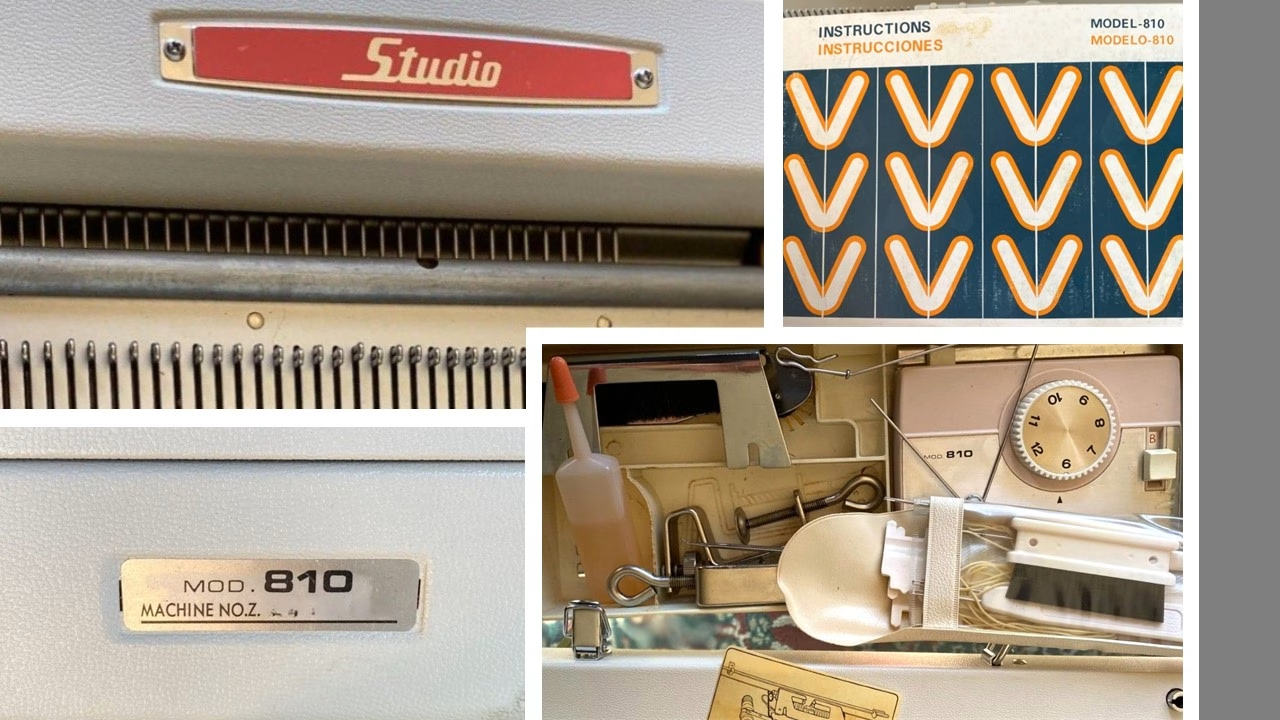
Studio mod. 810 knitting machine
Besides minor appearance features (including the color scheme), this machine is identical to the Silver SK105 and Silver SK106 knitting machines and very close to the Silver SK103 knitting machine. Thus, read the corresponding articles while admiring the pictures of Studio mod. 810 below.
-
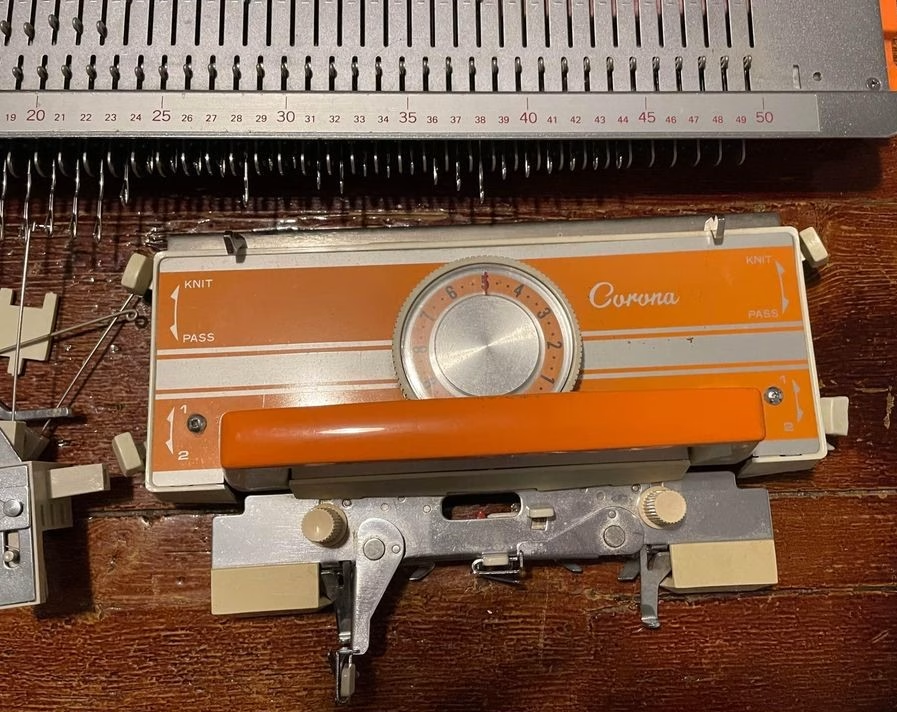
Corona CN-9N bulky knitting machine
Corona CN-9N knitting machine is a bulky-gauge knitting machine with 100 needles. Some sources say it is 8 mm gauge and some 9 mm. Since I still have not workedon mine, I don’t know for sure. If any of my readers can clarify it or even send me a picture with a ruler against the…
-
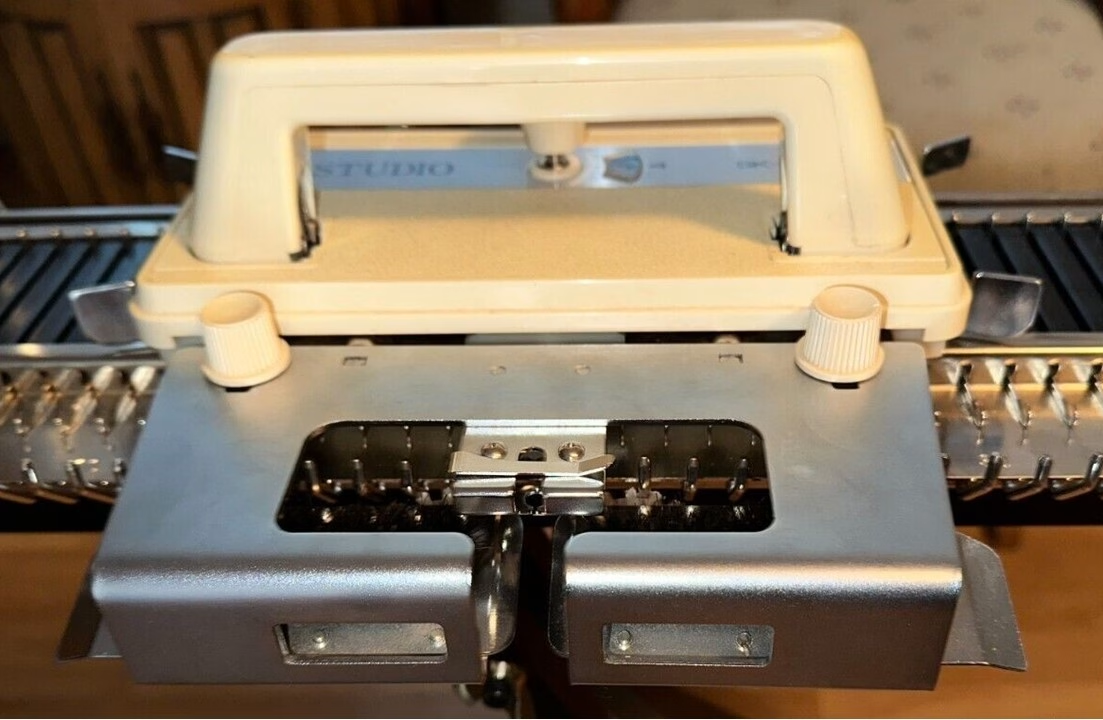
Studio SK-121 knitting machine
I am a proud owner of a very rare knitting machine – 11 mm -gauge super bulky Studio SK121. Join my journey of learning about this machine hands-on. I am going to start with some pictures and will add more information as I learn more about this beauty. Studio SK121 has 98 needles, spaced 11…
-
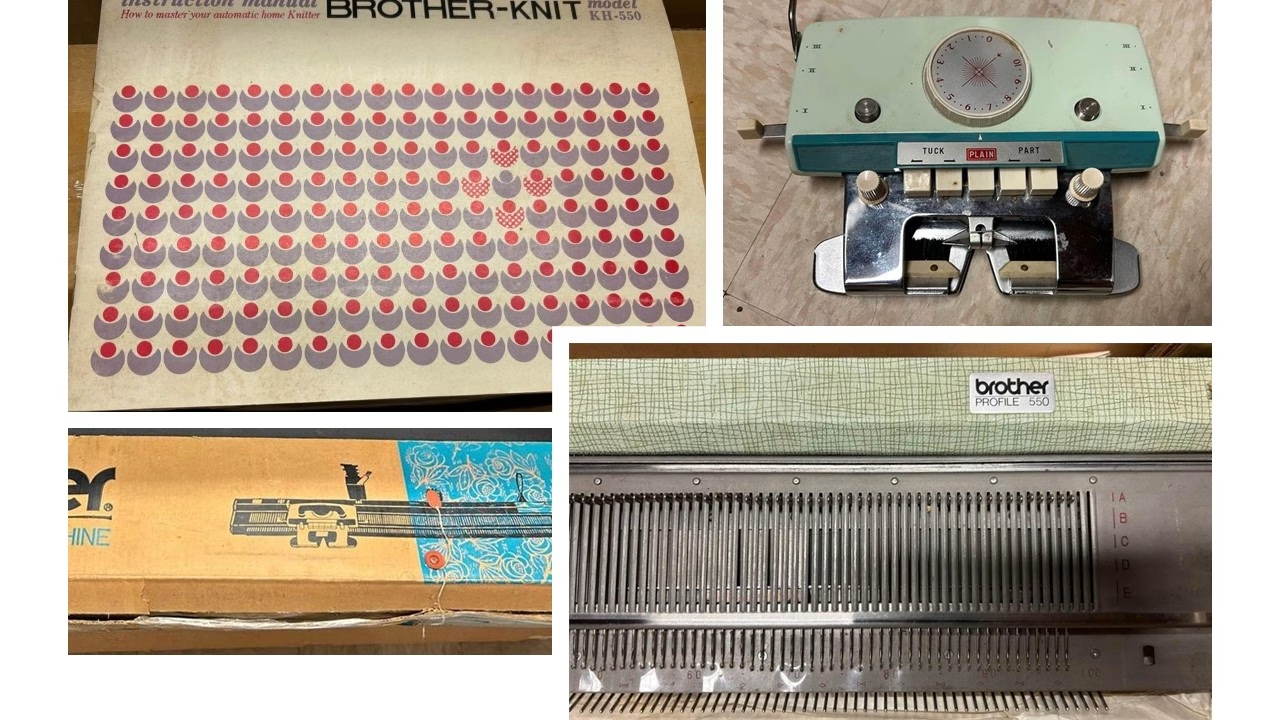
Brother Profile 550 knitting machine
Brother Profile 550, also often called Brother KH550, is a standard-gauge knitting machine with 200 needles, located 4.5 mm apart. This machine can only pattern if knitters hand-manipulate stitches. Thus, it is considered a basic model. This machine is strikingly similar to another manual/basic Brother knitting machine – Brother KH500. Everything is identical with a…
-
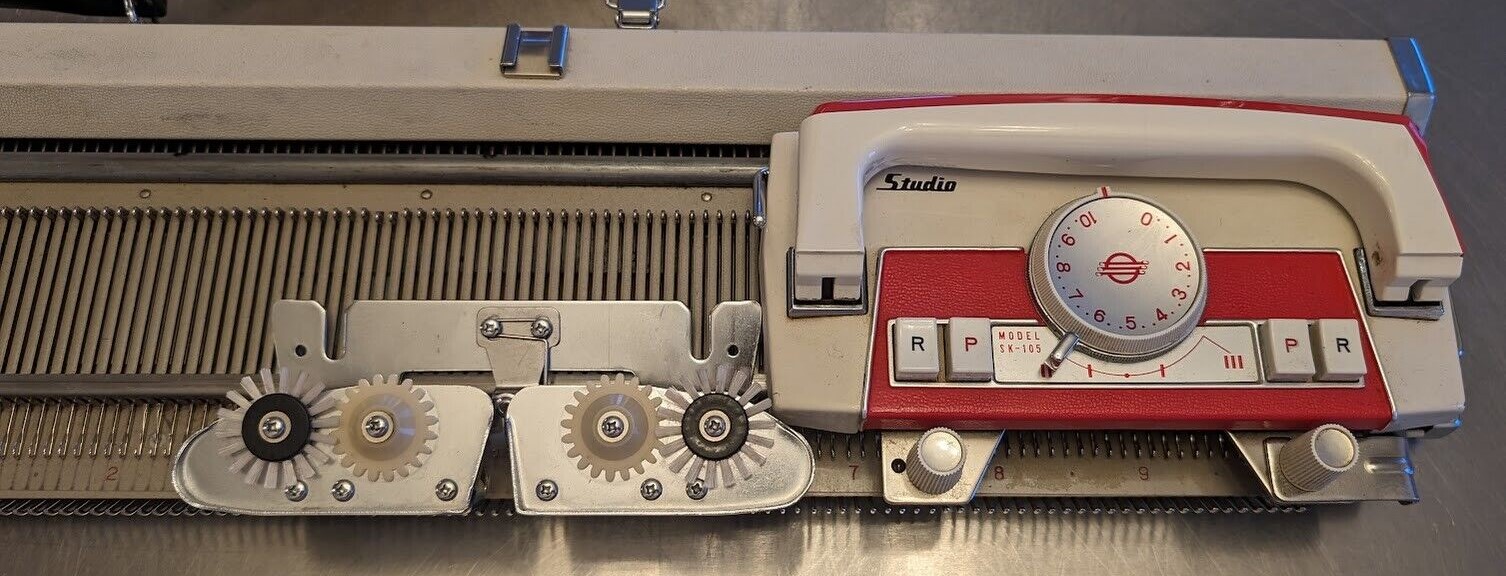
Studio SK-105 knitting machine
Studio SK105 knitting machine is often also called Silver SK105. Thus, read a detailed article dedicated to the Silver SK105 machine. This whole Studio SK105 versus Silver SK105 is a bit strange: both machines can have cases with the “Studio” written on the case lid, but “Silver” written on the accessories, and then again “Studio”…
-
Silver SK-103 knitting machine
Silver SK103 knitting machine is a standard-gauge knitting machine, similar to its earlier counterparts, Silver SK-101 and Silver SK-102. Silver SK103 is also identical to the Studio SK103 and Singer 555 knitting machines. Silver SK103 is a standard-gauge knitting machine with 200 needles, 4.5 mm apart from each other. This model was released in the…
-
Studio SK-102 knitting machine
Studio SK-102 knitting machine is a white-pink model manufactured in the early 1960s. It has 200 needles, 4.5 mm apart. It is identical to the Silver SK102 machine. (In fact, sometimes knitters see Studio brand written on the machine with the carriages and accessories having Silver names on them). Thus, read the corresponding blog article.…
-
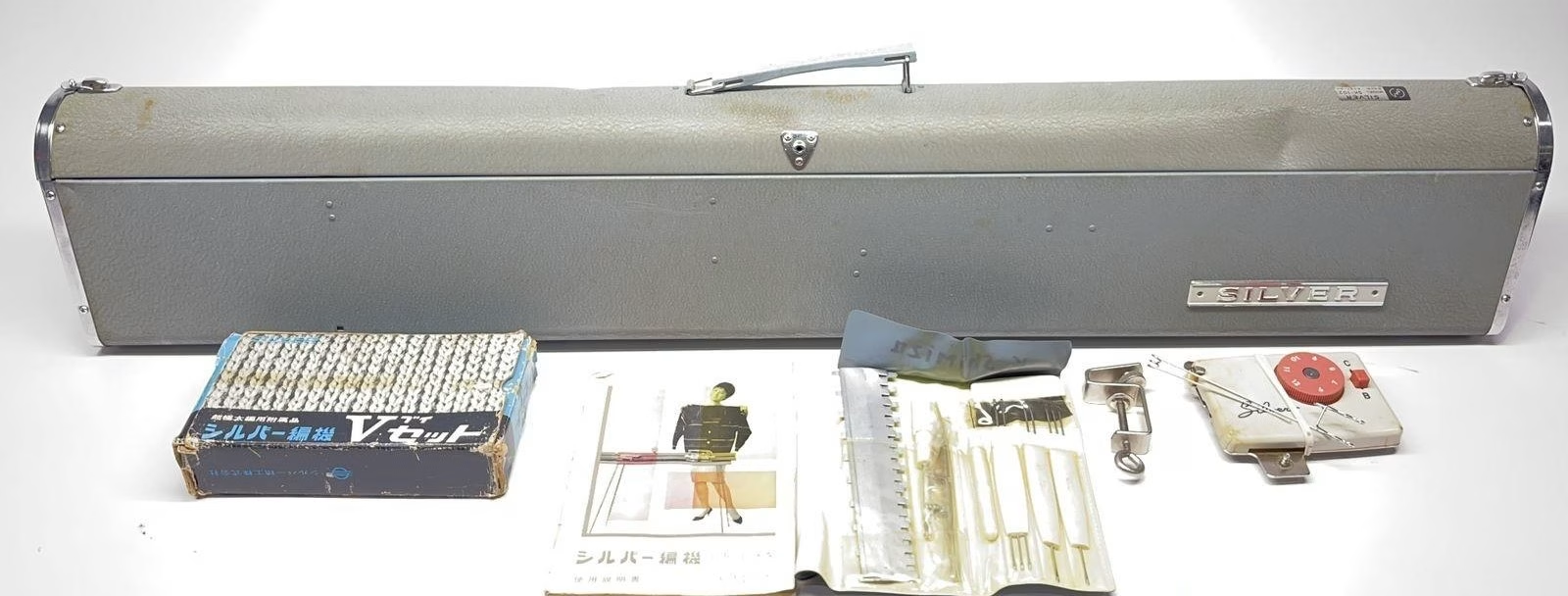
Silver SK-102 knitting machine
Silver SK102 knitting machine was manufactured and introduced to the market in the early 1960s. It is a standard-gauge knitting machine with 200 needles and only basic/manual stitch manipulation and needle selection capabilities. The machine’s color is a pretty combination of pink and white. The carriage handle folds conveniently for storage. The carriage is very…
-
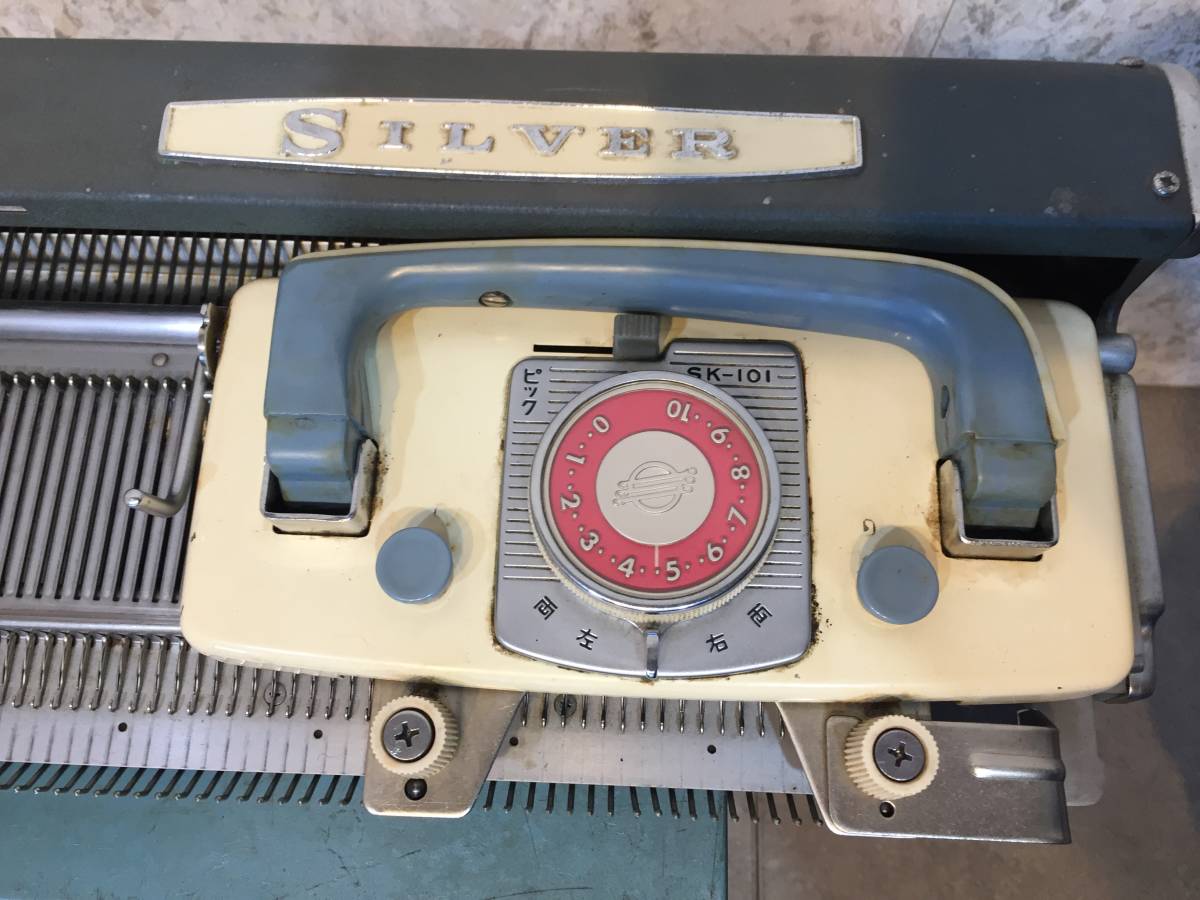
Silver SK-101 knitting machine
The Silver SK101 knitting machine was made by a Japanese company in 1962. This is a basic model capable of only knitting patterns by hand-manipulating the needles and stitches. It is a standard-gauge knitting machine with 200 needles, spaced 4.5 mm apart from each other. It is basically the same model as Studio SK101 and…
-
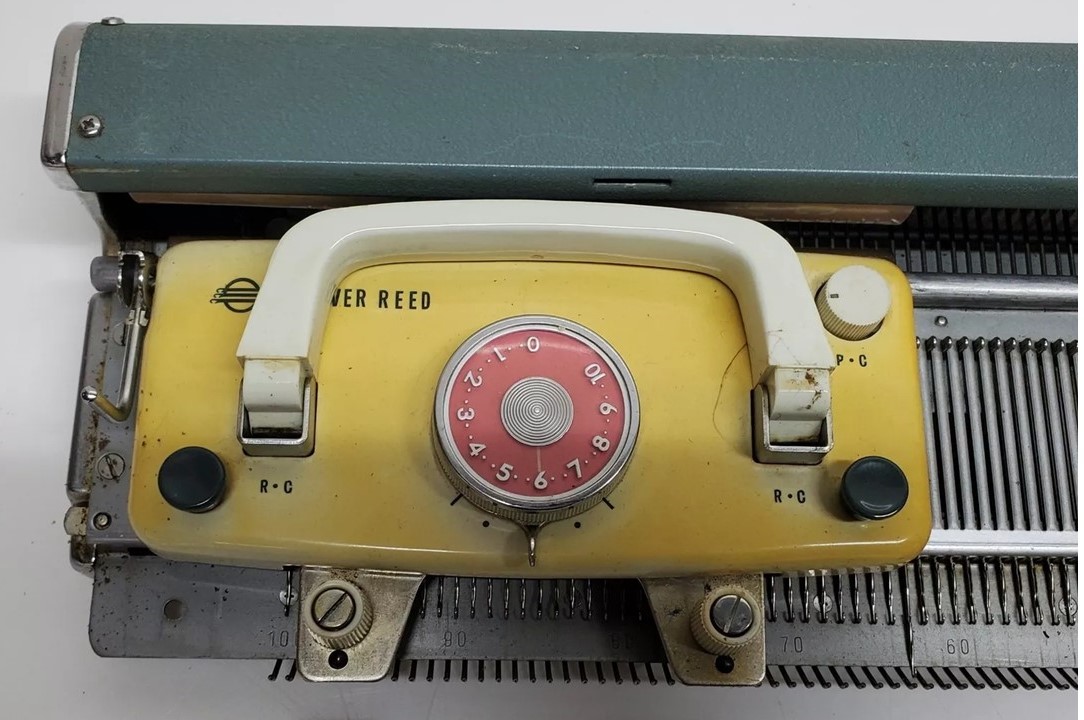
Silver Reed SK10 knitting machine
Silver Reed Sk10 vintage knitting machine was manufactured in the 1960s. It is a standard-gauge knitting machine with only manual/basic patterning capabilities. It has a detachable round vintage row counter and a standard set of accessories. It can be equipped with a matching ribber – Silver Reed SR10. Similar vintage knitting machines with only basic/manual…
-

Passap Linker: manual
Below are pictures of a manually operated Passap linker. It operates like most of the similar circular linkers: the fabric is thread onto the pegs and then the needle forms loop-like stitches.